
A food bank is a non-profit, charitable organization that distributes food to those who have difficulty purchasing enough to avoid hunger, usually through intermediaries like food pantries and soup kitchens. Some food banks distribute food directly with their food pantries.
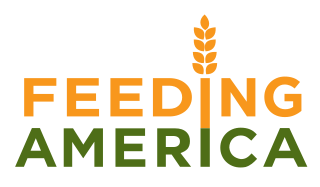
Feeding America is a United States–based non-profit organization that is a nationwide network of more than 200 food banks that feed more than 46 million people through food pantries, soup kitchens, shelters, and other community-based agencies. Forbes ranks it as the largest U.S. charity by revenue. Feeding America was known as America's Second Harvest until August 31, 2008.
Connecticut Foodshare is a nonprofit organization based in Wallingford, Connecticut. It serves as the sole food bank for all of Connecticut.
The Arkansas Foodbank is a non-profit food bank located in Little Rock, Arkansas. The Arkansas Foodbank distributed more than 20.9 million pounds of food and grocery products to its member agencies for Arkansans in need in 2013, according to chief executive officer, Rhonda Sanders.

The Capital Area Food Bank is the largest organization in the Washington metro area working to solve hunger and its companion problems: chronic undernutrition, heart disease, diabetes, and obesity. By partnering with over 450 community organizations in the District of Columbia, Maryland, and Virginia, as well as delivering food directly into hard to reach areas, each year the Capital Area Food Bank is helping nearly half a million people each year get access to good, healthy food.

Food rescue, also called food recovery, food salvage or surplus food redistribution, is the practice of gleaning edible food that would otherwise go to waste from places such as farms, produce markets, grocery stores, restaurants, or dining facilities and distributing it to local emergency food programs.

Redwood Empire Food Bank (REFB) is a food bank on the North Coast of California which belongs to the Feeding America network. Its mission is to end hunger in its community.
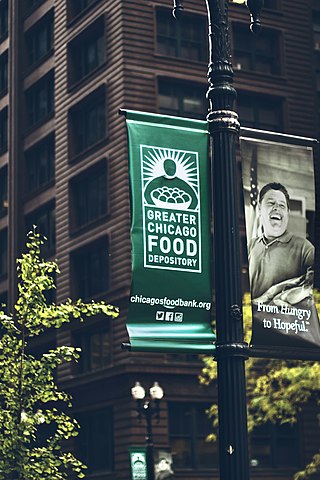
The Greater Chicago Food Depository (GCFD) is a nonprofit organization that fights hunger throughout Cook County, Illinois. The GCFD distributes donated and purchased food through a network of 700 food pantries, soup kitchens, shelters and community programs, serving more than 800,000 adults and children every year. In fiscal year 2016, the GCFD distributed more than 70 million pounds of nonperishable food, produce, dairy products, and meat - the equivalent of more than 160,000 meals every day. Of the $96,883,955 spent in 2016, over 90% went to direct food distribution programs.
Meet Each Need with Dignity (MEND) is a 501(c)(3) nonprofit organization serving the northeast San Fernando Valley in Los Angeles, California.

Hunger in the United States of America affects millions of Americans, including some who are middle class, or who are in households where all adults are in work. The United States produces far more food than it needs for domestic consumption—hunger within the U.S. is caused by some Americans having insufficient money to buy food for themselves or their families. Additional causes of hunger and food insecurity include neighborhood deprivation and agricultural policy. Hunger is addressed by a mix of public and private food aid provision. Public interventions include changes to agricultural policy, the construction of supermarkets in underserved neighborhoods, investment in transportation infrastructure, and the development of community gardens. Private aid is provided by food pantries, soup kitchens, food banks, and food rescue organizations.
The Freestore Foodbank is the largest emergency food and services provider to children and families in Greater Cincinnati, Northern Kentucky and Southeast Indiana.

A community fridge is a refrigerator located in a public space. Sometimes called freedges, they are a type of mutual aid project that enables food to be shared within a community. Some community fridges also have an associated area for non-perishable food. Unlike traditional food pantries, these grassroots projects encourage anyone to put food in and take food out without limit, helping to remove the stigma from its use. The fridges take a decentralized approach, often being maintained by a network of volunteers, community members, local businesses, and larger organizations. Food in community fridges is primarily donated by individuals or food rescue organizations and can be sourced from a variety of places. Major grocers like Trader Joe's and Whole Foods donate large amounts of excess foods to food rescue organizations that then donate to these fridges. The food donated would have otherwise been thrown out.
Northern Illinois Food Bank is a 501(c)(3) non-profit organization that focuses on providing food to those in need in northern Illinois. Partnerships and donors allow for more than 71,000 people to be fed each week through different programs. Northern Illinois Food Bank operates in 13 counties surrounding Chicago. The organization has four distribution centers located in Geneva, Rockford, Park City, and Joliet, which distribute food to pantries who then allocate the food to people.
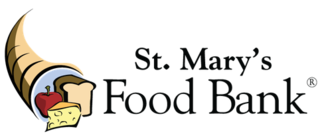
St. Mary's Food Bank Alliance is a nonprofit, nonsectarian organization located in Phoenix, Arizona. Founded in 1967 by John van Hengel, St. Mary's was the first modern organization to operate using the food bank model, which spread throughout U.S. and the rest of the world. Today, St. Mary's is recognized as the world's first food bank.

The COVID-19 pandemic has greatly impacted the international and domestic economies. Thus, many organizations, private individuals, religious institutions and governments have created different charitable drives, concerts and other events to lessen the economic impact felt.
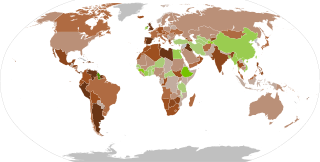
The economic impact of the COVID-19 pandemic in the United States has been widely disruptive, adversely affecting travel, financial markets, employment, shipping, and other industries. The impacts can be attributed not just to government intervention to contain the virus, but also to consumer and business behavior to reduce exposure to and spread of the virus.
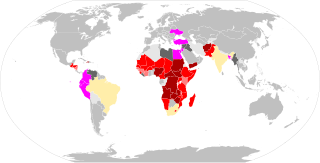
During the COVID-19 pandemic, food insecurity has intensified in many places – in the second quarter of 2020 there were multiple warnings of famine later in the year. In an early report, the Nongovernmental Organization (NGO) Oxfam-International talks about "economic devastation" while the lead-author of the UNU-WIDER report compared COVID-19 to a "poverty tsunami". Others talk about "complete destitution", "unprecedented crisis", "natural disaster", "threat of catastrophic global famine". The decision of WHO on 11 March 2020, to qualify COVID as a pandemic, that is "an epidemic occurring worldwide, or over a very wide area, crossing international boundaries and usually affecting a large number of people" also contributed to building this global-scale disaster narrative.
Share Food Program is a social services organization working for hunger relief in the Philadelphia region of Pennsylvania, United States. It serves as a food bank to the communities in accordance with USDA civil rights regulations and feeds more than 1 million people each month in Philadelphia and the suburbs. Share Food Program is the largest hunger-relief agency in the Greater Philadelphia area.

Second Harvest of Silicon Valley is a food bank based in San Jose, California, that serves Santa Clara and San Mateo counties, including Silicon Valley and the San Francisco Peninsula. With $136 million in revenue in 2019, it is the largest food bank in the San Francisco Bay Area and the 12th largest in the United States. As of 2020, it serves about 500,000 people on average per month. It is affiliated with Feeding America, a national network of food banks, as well as the California Association of Food Banks. Leslie Bacho is the organization's chief executive officer.

Midwest Food Bank is an American 501(c)(3) non-profit organization that gathers food donations, primarily from large companies, and distributes them to other non-profit organizations and disaster sites. Founded on a family farm in Bloomington, Illinois, in 2003, Midwest Food Bank began expanding in 2005 after contributing to disaster relief efforts for Hurricane Katrina. Currently, it operates ten locations in the United States and two internationally. As of 2021, it was the United States' thirty-ninth-largest charity and second-largest food bank by revenue; each month, it distributes more than $32 million worth of food to more than 2,000 other non-profit organizations.













